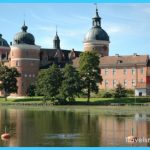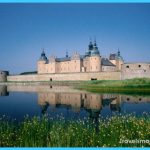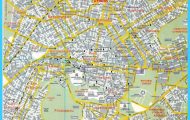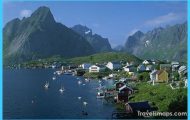SWEDEN. – SkSne is similar in landscape and economy to the Danish islands. It has a number of considerable ports, chief among them Malmo, and an agricultural hinterland devoted mainly to the growing of sugar-beet and wheat. In the middle of this agricultural area is the quiet little university town of Lund with its Romanesque cathedral, the finest church in Sweden.
A more distinctively Swedish region begins at the low ridge of hills which runs southeast across Sklne from the rugged and sharply pointed Cape Kullen and re-emerges on the Danish island of Bornholm. The landscape in Smaland, still in the latitude of Jutland though it is, has an authentically northern stamp. Its rump of gneisses and granites, worn down by Ice Age glaciers, rising to barely 400 m (1300 ft), is still largely a sparsely inhabited expanse of forest and moorland. In earliertimestheabundanceoftimber in this region led to the establishment of a busy glass-making industry; the industrial towns of the present day have developed around the junctions of the extensive railway network.
From the north Lake Vattern thrusts into the Smaland hills like a wedge, its straight shoreline reflecting its situation in a tectonic rift valley. At its southern end are Jonkoping and the smaller town of Huskvarna, at the geographical midpoint of Sweden. To the south of Jonkoping is the Taberg, a hill of high-grade iron ore which can be extracted by opencast working.
Of the coastal regions flanking SmSland, Halland, to the west, has been particularly favoured economically by the important railway line from Skcine to Goteborg. Blekinge to the south and the Kalmar region on the east have extensive morainic deposits, so that the forests usually reach right down to the coast, which is much indented by fjords.
Central Sweden is a much more open and hospitable territory and has a milder climate, although its coastal region is less open. Goteborg (Gothenburg), on the west coast, has an excellent natural harbour on the funnel-shaped estuary of the Gotaalv, but the coastal strip is narrow and rocky, so that the town was compelled to expand on to the surrounding hills and to build its industrial suburbs in the narrow side valleys.
On the east side of central Sweden is Stockholm, sheltered by an almost impenetrable girdle of skerries and accessible from the sea only through a labyrinth of concealed channels. This intricate landscape pattern is continued on the inland side of the city by Lake Malar with its thousand inlets and islands, and it is further protected by a dense ring of forest. Still farther inland are extensive areas of open country which the farmers of the Svear were able to develop; and this situation, cut off from the coast, may have helped to determine the independent and apparently aloof disposition of the Swedes.
Travel to Sweden Photo Gallery
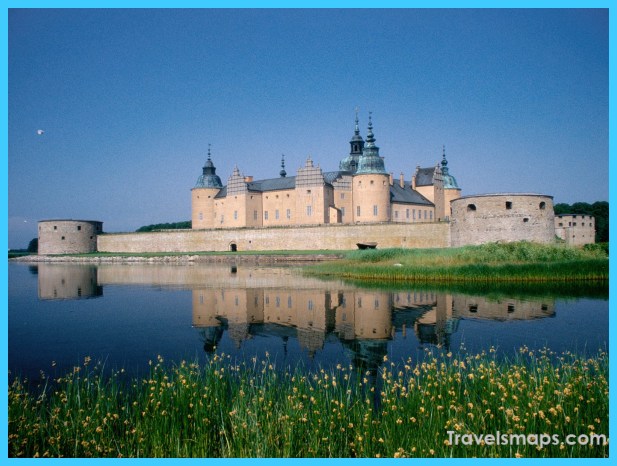
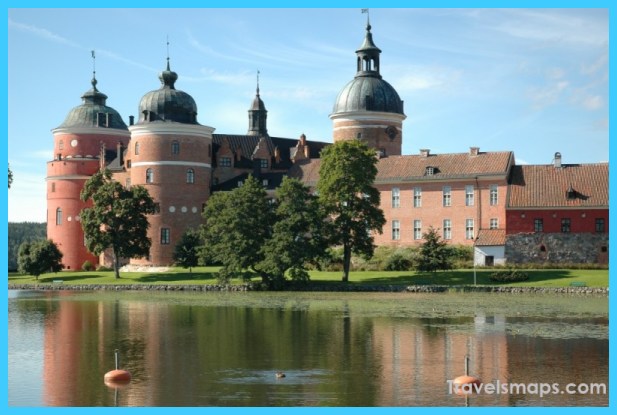
Maybe You Like Them Too
- Artisanal Fashion and Lifestyle Accessories
- Map of Australia
- Map of Sweden
- Map of Norway
- Travel to Norway

